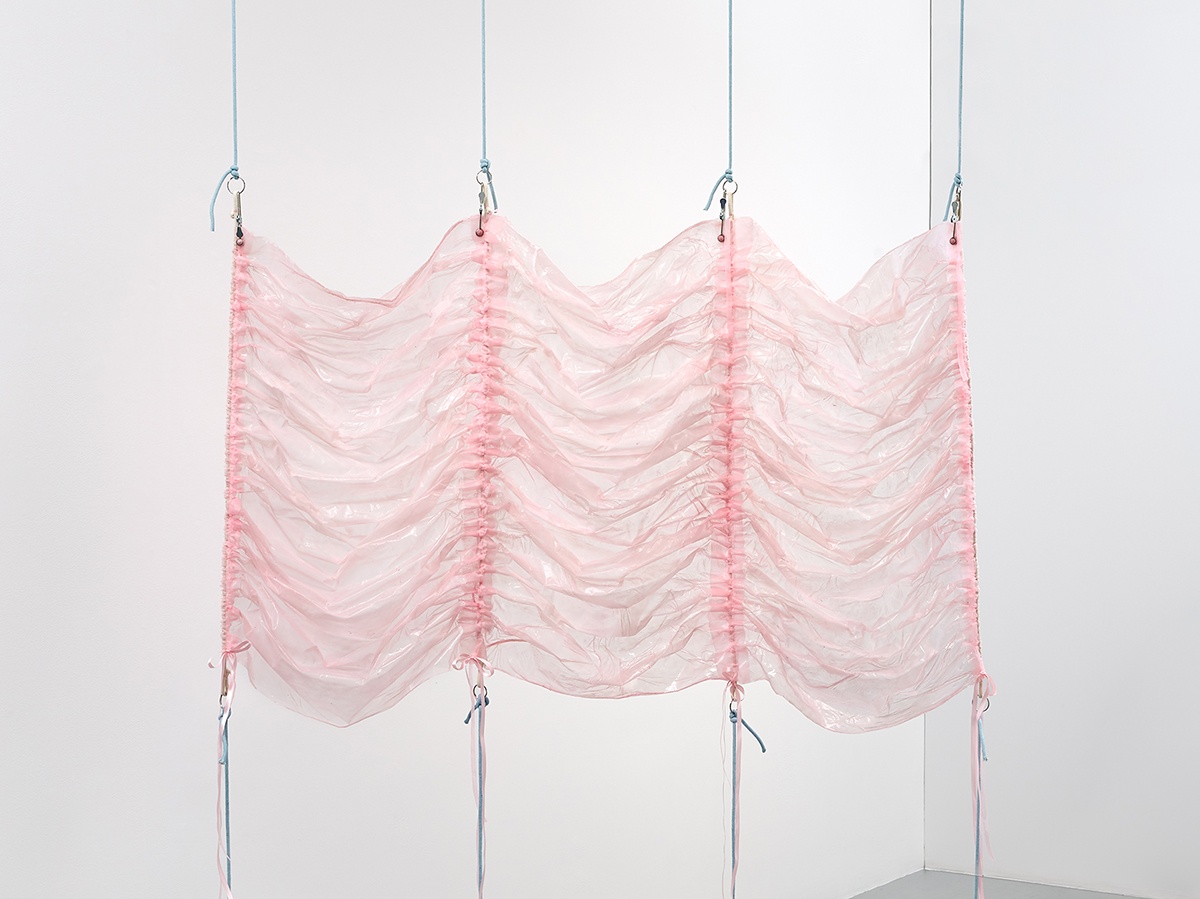
- Mary Kathryn Fellios
Artists/Participants: Anna-Sophie Berger, Nicola Costantino, Hannah Levy, Karinne Smith, and Rosemarie Trockel
Clothing encases the body beneath; it is a second skin. In the form of the garment, artifice surrounds bodily surface. There, the organic and the synthetic routinely collide. Garmenting inscribes ideas of beauty, gender, and history, fashioning pliant proxies in which ideas of the self are materially suspended. Shapeshifting: Or, Synonyms for Skin considers practices that create changes of appearance, reveling in acts of transformation and revealing the uncanny violence of feminine self-fashioning.
From Rosemarie Trockel’s reconsiderations of knitwear to Nicola Costantino’s long-standing interest in corsetry, the exhibited artists’ varied inquiries consider the art of dress as fabricating exteriors both thick and thin. Their works reverberate with novelist James Joyce’s assertion that “modern man has an epidermis rather than a soul” and its disturbing (if incorrectly gendered) aptitude.1 . Historical design methods—such as the medieval tailoring practices that Anna-Sophie Berger investigates, or the “skin and bones” nature of modernist industrial design that informs sculptor Hannah’s Levy’s work—remold the cultural space of the body. At the point where clothing meets the skin, our outermost layer is transfigured and our bodies are offered mechanisms to take on new and novel shapes.
Throughout the exhibition, outerwear continually acts as a transitional medium between self and world. Clothing’s diverse and contradictory layers offer permeability while simultaneously acting as durable protective sheaths of psychological and physical defense. Shapeshifting presents the confluence of fabric and form as an epidermic phenomenon, in which metamorphosis is made possible through the synthesis of garment and wearer.
-
James Joyce, James Joyce in Padua (New York: Random House, 1977), 134













